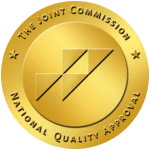5 Tips for Stopping Cravings

I used to think that recovery was at the end of a long road, but recovery doesn’t end with getting sober. Instead, it is the beginning of something brand new. I learned that this beginning involved my brain and giving it time to rebuild connections that changed while I was in my addiction. My cravings were intense during this time. However, being aware of these cravings and learning how to manage them was key to my recovery.
I learned that cravings are normal, and in and of themselves, are not a sign of relapse. You only relapse if you give in to those powerful cravings and start drinking or using again. Surprisingly, the goal isn’t to get rid of them; it is to recognize them and find a way to intervene before giving in to them.
The Craving Cycle
Most people find a common pattern. Here is how it progresses:
- Triggers – People, events, or sensory experiences that remind you of your old, addictive behavior. This is where the craving cycle begins.
- Obsession – Once the cycle begins, your mind locks onto your old ways of living, and it becomes extremely difficult to let go of those thoughts. And the more you think about it, the harder it is to resist your drug of choice.
- Intense Craving – These are both physical and emotional. The physical activates the stress response which causes shortness of breath and increased heart rate. The emotional becomes a compulsive need to get your fix, and you cannot concentrate on anything else but that. At this point, it is extremely difficult to say no to that craving.
Resisting the Cravings
I learned that while I cannot control the cravings, I can control how I respond to them. Here are five tips to help you do that:
Healthy Distraction – Used properly, this is a tool that helps you redirect your attention from something negative or dangerous to one that is neutral and safe. Some examples are:

1. Change your Environment
Get away from familiar smells, sounds, or sights by going for a drive, a bike ride, or a walk.
2. Reach Out to Someone who Supports You
Contact your sponsor or a trusted friend or family member who can talk you through whatever is triggering you.
3. Find a “Clean” Activity
Engage in any type of positive behavior, such as: starting on a new hobby, doing some housecleaning, reading a book, or seeing a movie.
4. Change your Thoughts
When a craving hits, you will forget all of the negative consequences drinking or using causes. Start focusing on the negative and how disappointed you will be if you give in to the craving. Likewise, focus on the positive aspects of being sober.
- Creative Imagery – Swap out the images from your addiction to those of being sober. It is a simple but effective way to stay in touch with your values and resist cravings.
- Meditate – Stress, anger, and anxiety are some of the most common relapse triggers. Just a few minutes of quiet and focusing on your breathing will relax you. Then meditate on where you want to go with your life.
5. Physical Activity
When you exercise, your body produces natural, feel-good chemicals that can take the place of your drug of choice. It doesn’t have to be traditional exercises; anything that promotes physical activity, such as gardening, will do the trick.
Remember, you can build a meaningful, drug-free life by using the tips above to protect yourself against relapse. When your life is filled with a sense of purpose and rewarding activities, your addiction will lose its appeal.
If you or your loved one is currently experiencing a problem with addiction to drugs or alcohol, don’t wait until it’s too late. Please Contact Beginnings Treatment Centers Now to speak with one of our experienced intake advisors. There is no obligation or cost for the initial consultation, and quick action might save your life or that of your loved one.

